This impressive rock is split down the middle into two parts, so neatly that it seems as if it was performed with the precision of a laser beam. It measures about 6 m high and 9 m wide, and the overall shape may have been the result of wind erosion and chemical weathering. The two parts of the rock are both balanced on small pedestals and the southeast face of the rock is covered with numerous petroglyphs.
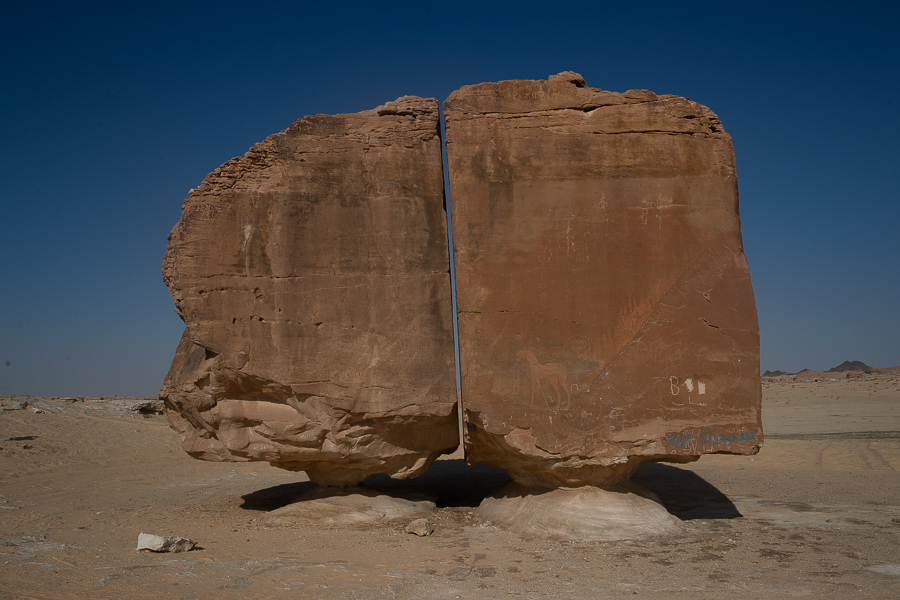
In the Saudi Arabian desert, the Al Naslaa rock formation looks completely unnatural. Its perfectly vertical split remains a mystery.
With petroglyphs dating back thousands of years and evidence of human inhabitants dating back to the Bronze Age, the Al Naslaa rock formation towers over its surroundings. However, its most unusual feature is that it’s actually split in two, down the middle, with each section of the rock balanced atop a thin, small pedestal. Although many wonder whether nature could have created such a feature, there are three leading geological features behind one of the world’s most spectacular rock formations
Two boulders, six meters (20 feet) high, stand atop their own pedestals, separated by a perfectly smooth crack.
Theories abound about the origin of the Al Naslaa rock formation, but the genesis of this massive geological phenomenon is likely to remain a mystery.
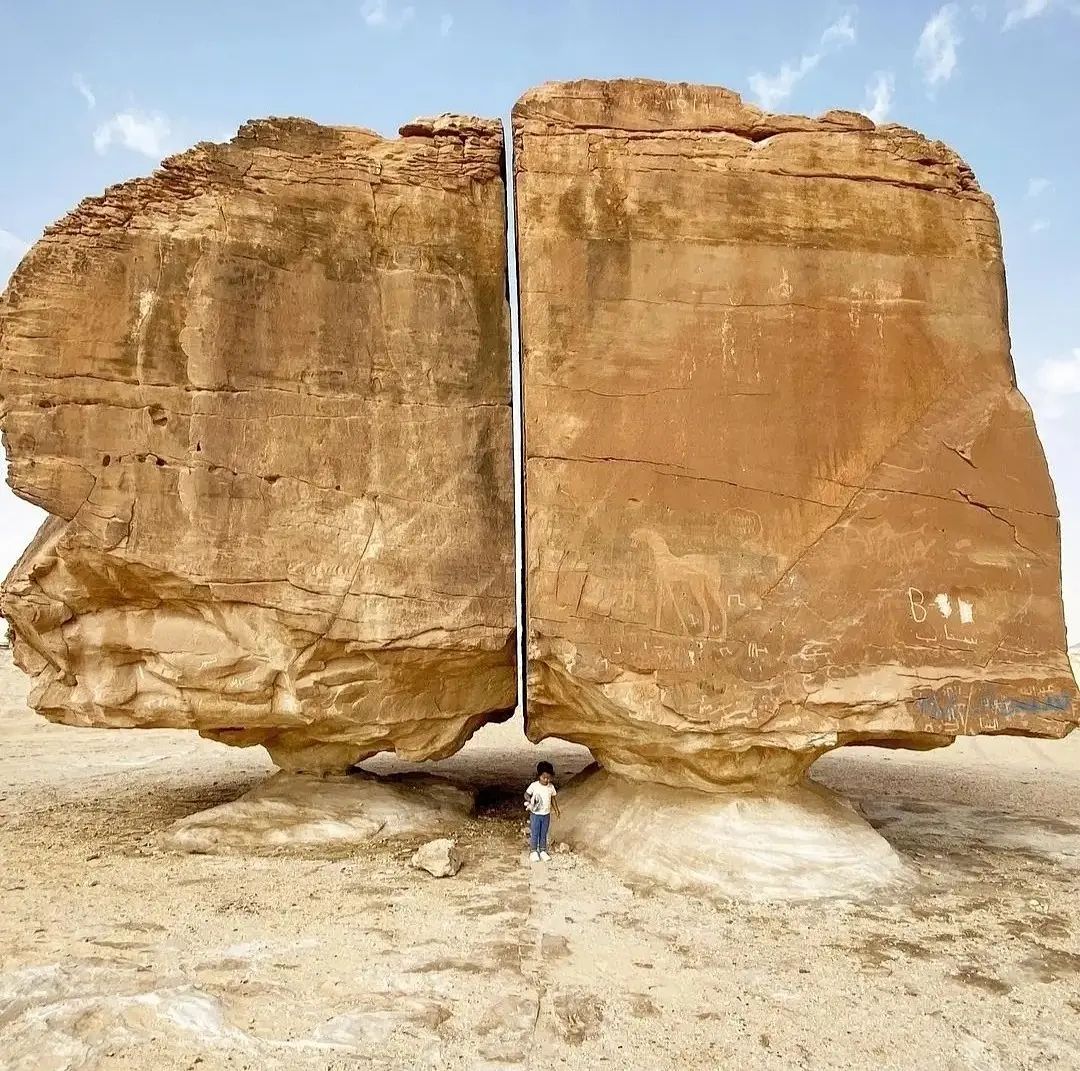
Located in Saudi Arabia’s Tayma Oasis — the site of Saudi Arabia’s oldest human settlement — Al Naslaa is comprised of twin sandstone rocks, balanced atop naturally formed pedestals — with a smooth gap running vertically between them, so precise it looks as if it was carved with a laser beam.
Scientists can’t explain exactly how the 4,000-year-old geological formation was split down the middle, but the side-by-side boulders — each 20 feet (6 meters) tall — have the additional lure of visible petroglyphs that are thousands of years old. One of the most notable glyphs carved into the sandstone is an image of a person leading a horse that resembles an Arabian, one of the world’s oldest horse breeds still in existence whose origins can be traced to Saudi Arabia in the seventh century, well before Al Naslaa was carved by human hands.
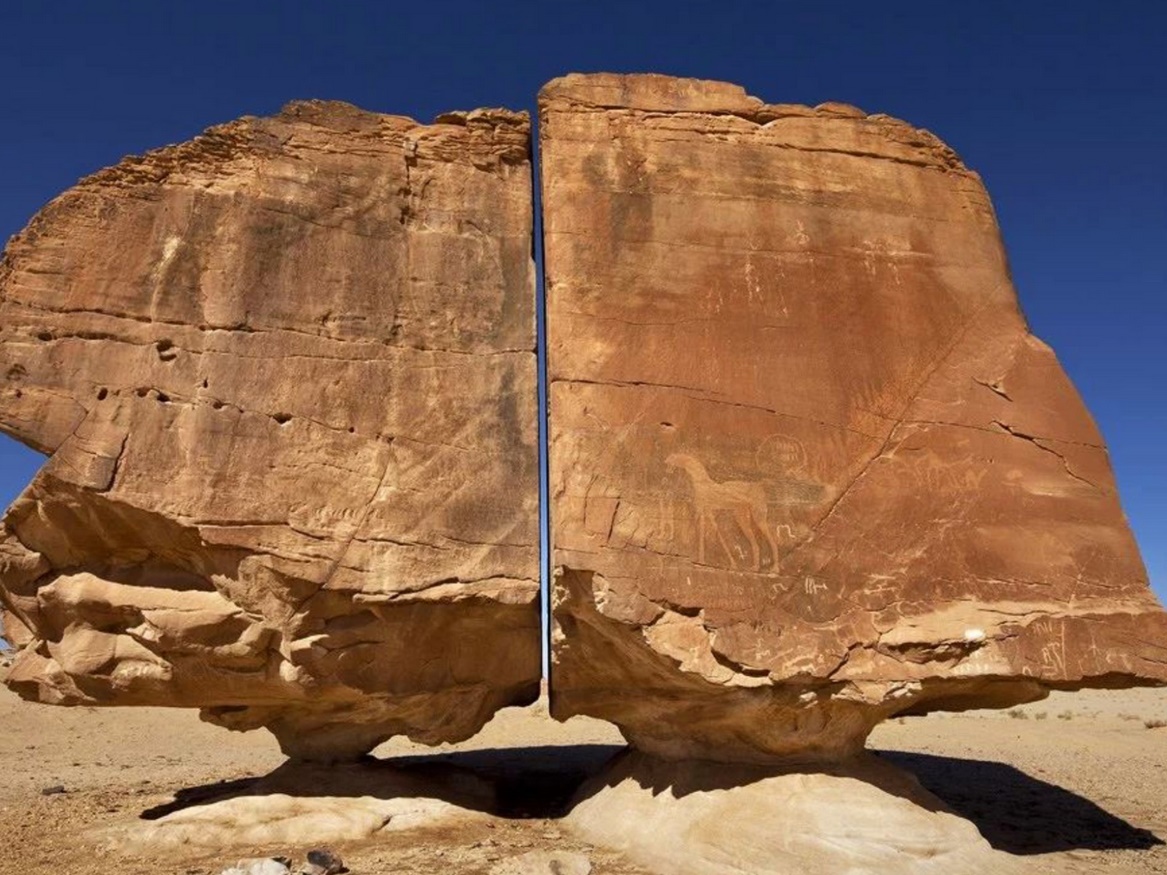
Possessing petroglyphs up to 4000 years old, Al Naslaa’s central fissure is iconic.
Ancient Gods, Aliens, Lasers or Just Water?These perfectly balanced boulders have been the subject of many an origin story, with perhaps the most bizarre being space aliens. Social media users, including news aggregate Acerca del Mundo on its Facebook page, have pondered whether the precise cut could have been made by alien visitors possessing advanced technology.
“Some believe that this is the creation of the ancient gods or aliens. Considering that the formation looks as if it had been cut by a well-aimed laser, some believe that an alien descended into the Tayma Oasis and shattered the rock with advanced technology not available to humans in the formation of it,” Acerca del Mundo posted.
Others believe the rock sits upon a fault line. This theory posits that the split in the rock was created when a weak spot was affected by a shift in tectonic plates.
Another theory posits that a “joint” within the rock may have split. A joint is an area within a rock, in this case sandstone, that becomes worn away and then separates the larger formation. Notably, joints found within sandstone rocks like Al Naslaa are more likely to exhibit vertical separations.
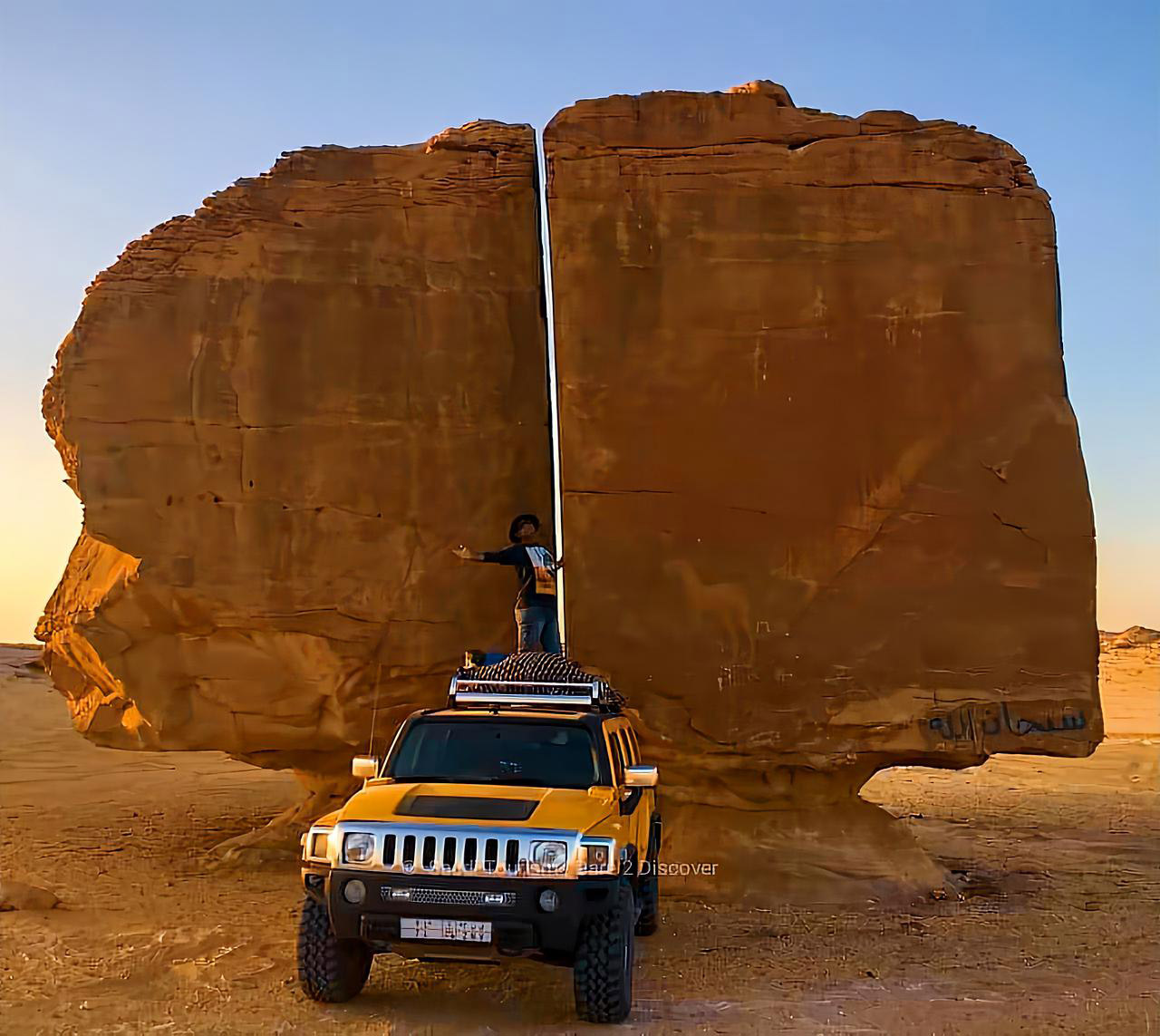
.
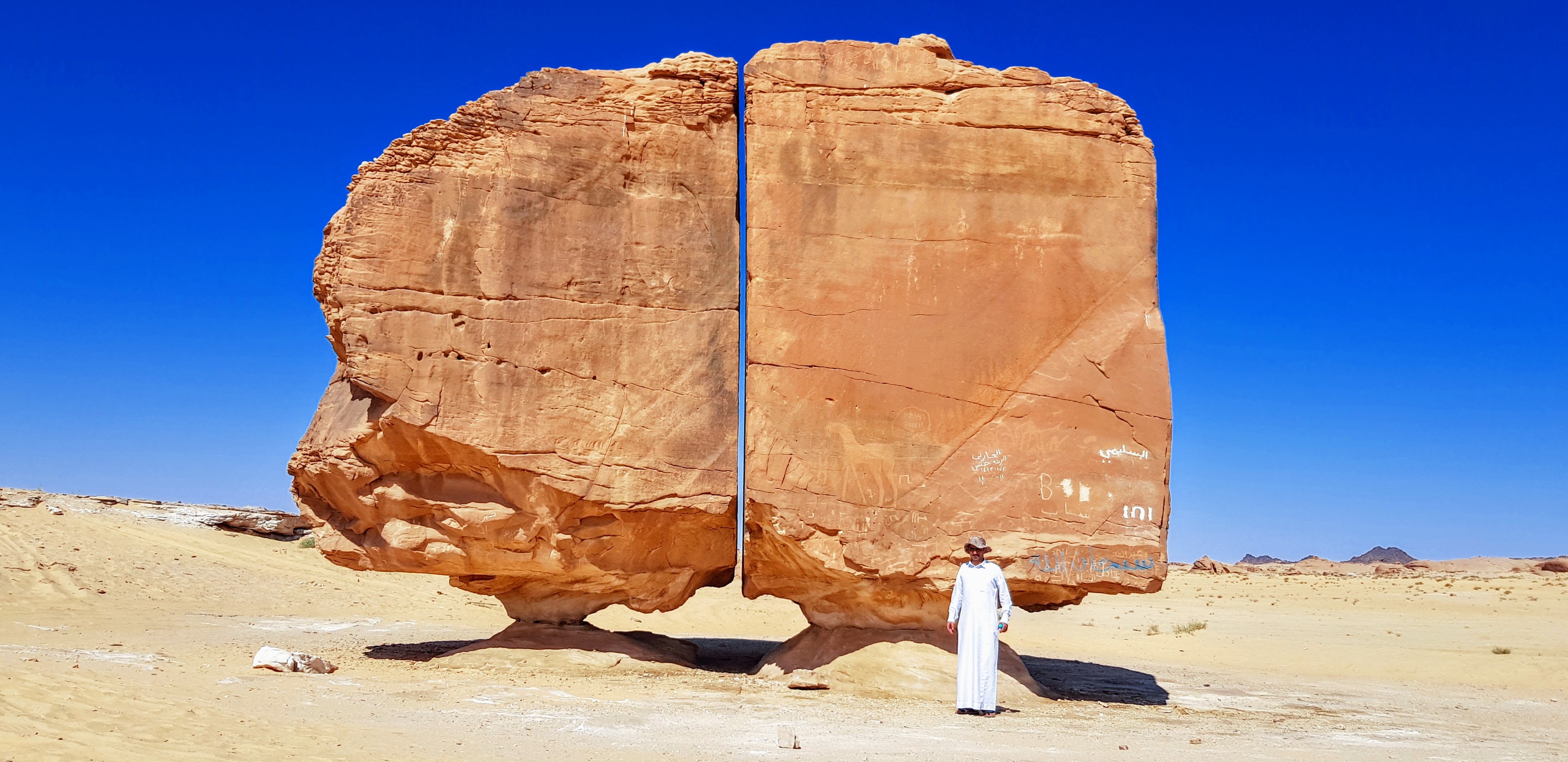
.





